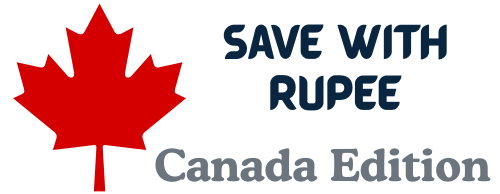A comprehensive 2025 guide on refinancing loans in Canada. Learn detailed steps, benefits, costs, eligibility, types of loans to refinance, and expert tips for smart refinancing decisions.
How to Refinance a Loan in Canada: Detailed Guide
Answer Box:
Refinancing a loan in Canada can be a powerful financial tool to reduce your interest rates, lower monthly payments, consolidate debts, or adjust loan terms. This detailed guide explains the process, types of loans you can refinance, benefits, costs, eligibility, and expert strategies to make the most of refinancing in 2025.

What is Loan Refinancing?
Loan refinancing involves replacing your existing loan with a new loan under different terms. The new loan pays off your current debt, and you repay the new loan over an agreed term.
Refinancing applies to multiple loan types, including:
- Mortgages
- Personal loans
- Auto loans
- Student loans
- Business loans
Why Do Canadians Refinance?
Lower Interest Rates:
Interest rates fluctuate over time. Refinancing can secure a lower rate, reducing interest paid over the loan’s life.
Lower Monthly Payments:
By extending the loan term through refinancing, you can bring down monthly payments, easing cash flow.
Consolidate Multiple Debts:
Refinance several loans into one with potentially lower interest and one monthly payment.
Change Loan Type or Features:
Switch from a variable to fixed rate loan or add flexibility like prepayment options.
Access Home Equity or Loan Cash:
With mortgage refinancing, cash-out refinancing lets homeowners borrow additional money by leveraging equity.
Step-by-Step Guide to Refinancing a Loan
1. Review Your Current Loan Details
Understand the outstanding principal, interest rates, monthly payments, remaining term, and prepayment penalties.
Many loans impose early repayment charges, which can affect savings when refinancing.
2. Check Your Credit Score
A higher credit score qualifies you for better interest rates and loan terms. Obtain your credit report via Equifax or TransUnion and correct any errors.
3. Calculate Your Financial Goals
Decide the primary goal—whether it’s lowering monthly bills, reducing total interest, shortening loan term, or cashing out equity.
4. Shop Around for Lenders
Identify banks, credit unions, online lenders, or specialized refinance companies.
Compare APRs, term lengths, fees, and flexibility. Request loan estimates.
5. Understand Costs Involved
Refinancing isn’t free; consider:
- Prepayment penalties on the old loan
- Application or loan setup fees on the new loan
- Legal and appraisal fees (especially for mortgages)
- Title and registration fees
Calculate if savings from lower interest outweigh refinancing costs.
6. Apply for Refinance
Prepare documentation: income proof, credit reports, existing loan statements, ID, and property documents (for mortgage).
Complete application through your chosen lender.
7. Loan Approval and Closing
Upon approval, you’ll sign loan documents, pay fees, and the new lender pays off your prior loan lender.
Ensure the new loan terms are exactly as agreed before signing.
8. Begin Repayment on New Loan
Set up payments as per new schedule, preferably automated to avoid missed dues.
Types of Loans You Can Refinance in Canada
| Loan Type | Key Details |
|---|---|
| Mortgage | Most common loan to refinance; renegotiate rates, terms, or borrow cash-out |
| Personal Loan | Consolidate multiple debts or lower rates |
| Auto Loan | Refinance for lower payments, extend auto loan term |
| Student Loan | Reduce interest burden or change repayment terms |
| Business Loan | Streamline payments, access better financing terms |
Pros and Cons of Refinancing
| Pros | Cons |
|---|---|
| Lower monthly payments | Closing and startup costs can reduce savings |
| Reduce overall interest paid over time | Possible extension of loan length |
| Consolidate debts for easier management | Prepayment penalties on old loan may apply |
| Access additional cash in case of mortgage | Requires good credit and income verification |
| Opportunity to switch loan conditions | Time-consuming paperwork and approvals |
Key Costs to Consider When Refinancing
- Prepayment Penalty: Fees for paying off your current loan before maturity (up to 3 months interest or more).
- Application Fees: Charged by new lenders to process your loan.
- Legal Fees: Especially with home refinances requiring title searches and registrations.
- Appraisal Fees: Property evaluation for home refinancing.
- Title Insurance: To protect lender and borrower interests.
Expert Tips for Successful Refinancing
- Calculate break-even point to understand how long it will take to recover refinancing costs through savings.
- Avoid refinancing multiple times in a short period; this can harm your credit.
- Improve credit score before applying for better rates.
- Be transparent with lenders about your financial situation.
- Keep an eye on economic trends as interest rates can vary with market conditions.
Real-Life Story: Emma’s Mortgage Refinance Success
Emma owned a condo in Calgary with a 5% interest mortgage. After interest rates dropped in 2024, she monitored offers and refinanced to 3.25%. Though she paid $1,200 in penalties and fees, she saved $400 monthly, recovering costs within four months. She also took out extra cash for home renovations, boosting her property value. Emma’s discipline and timing made refinancing a strategic win.
Frequently Asked Questions (FAQs)
Can I refinance if I have multiple loans?
Yes, refinancing can consolidate multiple loans into one depending on lender rules.
Is refinancing only for those with good credit?
Better credit helps but some lenders offer refinancing for fair credit at higher rates.
How long does refinancing take?
Mortgage refinancing typically takes 3-6 weeks; personal loans may close faster.
Will refinancing affect my credit score?
Credit inquiries and new accounts can cause a small temporary dip; consistent payments build credit.
What if I want to switch from variable to fixed rate?
Refinancing is an ideal opportunity to adjust your loan’s interest terms.
Call to Action
Refinancing a loan in Canada can significantly reduce costs and improve financial flexibility when done correctly. Start by reviewing your current loan, assessing your goals, and shopping for best offers from multiple lenders. Calculate all associated costs carefully and plan for a smooth application process. Take control of your finances today by exploring refinancing options and choose a loan that fits your budget and future plans!
This detailed guide is tailored for cad.savewithrupee.com to empower Canadians to refinance loans smartly and benefit in 2025.
🍁 Smarter Money Tips for Canada

Discover our guides on credit cards, loans, insurance, and savings designed for Canadian readers.
💡 Explore Canadian Guide